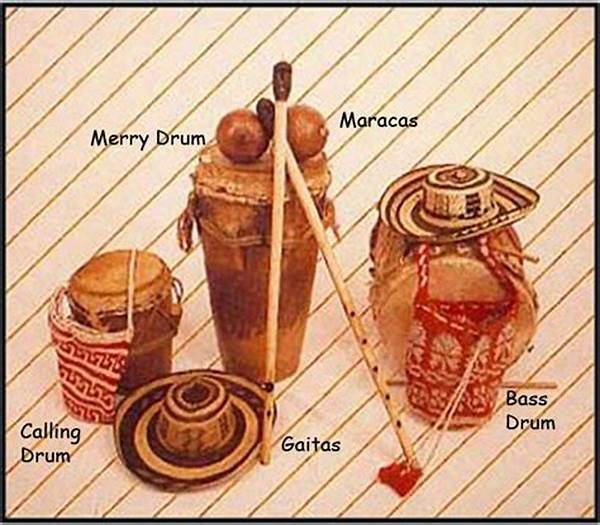Are you ready to get your groove on and dive into the vibrant world of cumbia? Let me tell you, this isn’t just any old dance music—it’s a cultural phenomenon, powered by its heartbeat: the traditional instruments in cumbia. These instruments don’t just make noise; they create an irresistible rhythm that gets under your skin and moves your feet. Cumbia’s distinctive sound sets it apart, and you can’t talk about it without mentioning the traditional instruments in cumbia that make it all happen.
Read Now : Top Tracks For Captivating Reels
The Soul of the Rhythm: Core Instruments
When you think of traditional instruments in cumbia, you’ve got to start with the percussion section. Man, these instruments are the real MVPs of any cumbia band. The tambora—a large bass drum—throws down those deep, resonant beats that you feel in your bones. It’s the foundation, solid as a rock, grounding the music. Then there’s the alegre drum—a bit smaller but full of life. It’s known for its peppy, upbeat tones, layering the sound with a lively spirit. Rounding out the rhythm section is the guacharaca. This scrappy little scraper sets the tempo with its fast-paced rhythms. Put them all together, and you’ve got a rhythm section that’s tighter than a pair of skinny jeans. These traditional instruments in cumbia are the bedrock, the lifeblood of cumbia music, and without them, you might as well be dancing in silence.
Instruments That Bring the Flair
When it comes to traditional instruments in cumbia, the wooden flute is absolutely iconic. This wind instrument adds an unmistakable hue to cumbia’s sound. Then there’s the accordion, man; it’s like the cherry on top. Its expressive notes can pull at your heartstrings or get you jumping like a jackrabbit. Let’s not forget the maracas. These little guys bring the sizzle to the fiesta, adding their chatter to the mix and keeping things jazzy. So, all these traditional instruments in cumbia come together to create a unique tapestry that is not just music, but a full-on experience.
Keeping the Dance Floor Alive
All right, now picture the crowd buzzing like bees, feeling the pulse of traditional instruments in cumbia. First up, those rhythms hit you straight in the heart. It’s impossible to resist the magnetic pull. You might have two left feet, but hear those drums? Forget about it! You’re suddenly a dance floor warrior. The rhythm’s contagious, dude, and it’s thanks to these traditional instruments in cumbia that the groove never stops. They bring a mood so infectious, even the shyest folks can’t help but throw down their best moves.
With cumbia, you feel part of something bigger. The beat is universal, and every beat tells a story. It’s like you’re riding a sonic wave, only brought to life by the unique sounds of these traditional instruments in cumbia. You’ll feel like you’ve been transported somewhere exotic, filled with vibrant fiestas and laughter echoing in the night sky. So next time you hear those beats, remember—the traditional instruments in cumbia aren’t just creating music; they’re crafting a musical journey.
Vibing with Tradition
Hey, let’s break it down: traditional instruments in cumbia are all about vibes. Cumbia isn’t just about music; it’s about connecting people. Picture maracas shaking, accordion wailing—that’s the essence, baby! Those traditional instruments in cumbia have been passed down through generations, each beat echoing the soul of its people. It’s like hearing history in stereo, with every shake and rattle honoring the musical roots that make this genre so rich and spicy. The accordion’s laughter, the guiro’s grating rhythm—they don’t just play tunes, they narrate tales of love, joy, and celebration. And man, when you hear them live, it’s like hearing the heartbeat of a culture. You just can’t beat the authenticity of traditional instruments in cumbia.
Read Now : Perfect Music Picks For Reels
Groove Like Never Before
These vibrant traditional instruments in cumbia—the guacharaca, the accordion—they’re the lifeline of the genre. Their sounds are energetic and irresistible, pulling people into cumbia’s rhythmic embrace. The first time you hear them, you’re hooked. They take you on a sonic adventure, rich with stories and experiences. These instruments aren’t just playing music; they create a scene, a vibe that’s magnetic. Traditional instruments in cumbia bring people together, transforming any space into a lively dance floor where cultures merge and groove harmonizes with stories. It’s all love, all heart.
The Final Beat
So, what’s the bottom line with traditional instruments in cumbia? It’s all about connection. These instruments bring people together across all divides with their irresistible rhythm. You could be anywhere in the world, but hear those beats? Suddenly, you’re right there in the heart of a bustling fiesta. The drumbeat feels like a warm hug; the accordion calls you out to dance. There’s nothing quite like it. Traditional instruments in cumbia offer a gateway to a world where music transcends language, where rhythm is king, and everyone’s invited to join the parade.
There’s a reason these traditional instruments have stood the test of time. They tap into something primal, an invitation for everyone to come together, celebrating life through dance and music. It’s more than just notes and chords; it’s a feeling. So all hail, traditional instruments in cumbia—capturing hearts and moving feet, one infectious beat at a time. These sounds are treasures, painted in the vibrant colors of the cultures that birthed them. When you hear them, you’re hearing history and the present all grooving together. And that, my friend, is what makes them truly special.
